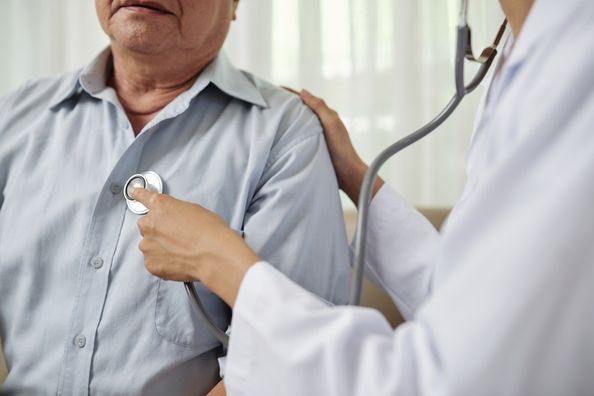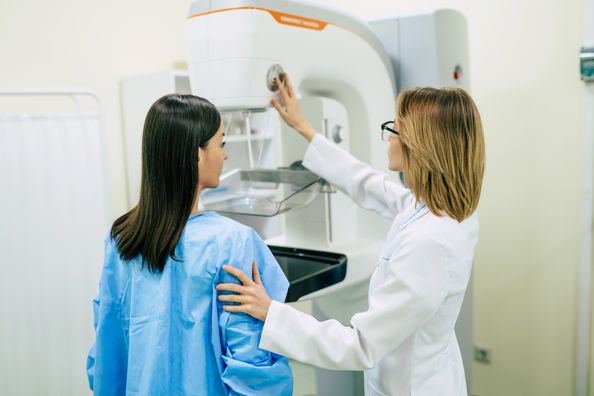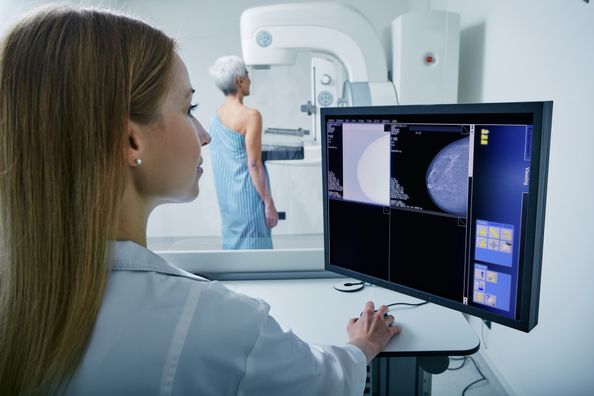The human heart is responsible for pumping blood and oxygen throughout your body, making it one of the most vital organs. It is comprised of arteries, muscles and electrical impulses that keep us healthy and moving on a daily basis. Due to its complexity and relationship with other organs in your body, there are a variety of cardiologists who specialize in different functions of your cardiac system.
Understanding what a specialist does and does not do can help you determine the most appropriate route to take, specific to your heart condition. Our Cardiology physicians discuss their areas of expertise in treating heart conditions.
Cardiac Electrophysiology — Dr. Eugene Greenstein, MD
Cardiac Electrophysiology is a branch of cardiology that focuses on diagnosing and treating heart conditions that affect the electrical activity of your heart. The heart is a complex electrical system. When your heart is healthy, the electrical impulses are responsible for steady, predictable heart contractions and normal blood flow. If you have a cardiac rhythm disorder, or arrhythmia, the impulses don’t spread evenly throughout your heart, resulting in an abnormal heart beat. Symptoms of arrhythmia may include chronic chest pain, a fluttering sensation in your chest, shortness of breath and/or a slow (bradycardia) or racing (tachycardia) heartbeat.
A cardiac electrophysiologist will test the electrical activity of your heart to understand where your abnormal heart rhythm is coming from. To do this, they will order an electrophysiology (EPS) test that threads small catheters to your heart, through a vein, in order to record your cardiac electrical activity. Your cardiologist will then signal electric pulses through the catheters to make your heart beat at different rhythms. The EPS test is outpatient and usually takes one to four hours for imaging, and two to three hours for recovery.
During your recovery, your cardiac electrophysiologist will analyze your EPS test results and produce an informed diagnosis and recommended treatment plan. Some common treatment options for arrhythmia, depending on your severity, include cardiac ablation or a biventricular pacemaker or defibrillator.
- Cardiac ablation is a minimally invasive procedure that creates scar tissue on your heart in order to stop unwanted electrical impulses.
- There are many different types of pacemakers and defibrillators but they all work to monitor changes in your heartbeat and send electrical impulses to correct it when needed. In most cases, these devices are implanted directly in your heart through a minimally invasive procedure.
Interventional Cardiology - Dr. Vinay Arora, MD
Interventional cardiology is a sub-specialty that works with invasive treatments for heart disease. Interventional cardiologists receive additional training in diagnosing and treating cardiovascular disease through catheter-based procedures such as angioplasty and coronary stenting. The most common heart conditions treated by interventional cardiologists include coronary artery disease (CAD) and blockages in other vessels of the body.
Coronary Artery Disease
CAD is the most common type of heart disease in the United States and the leading cause of death in both men and women. CAD is due to a buildup of cholesterol on the inner walls of your heart, restricting blood flow through your arteries. If left untreated, CAD can cause severe chest pain, irregular heartbeats or lead to heart failure or heart attack. If you are suspected to have CAD, you will be referred to an interventional cardiologist who will order diagnostic testing. Your testing may vary depending on your condition, but you will most likely be recommended for an echocardiogram, cardiac catheterization and angiogram or a coronary computerized tomography angiogram (CCTA).
If your CAD is less severe, your interventional cardiologist may recommend medication such as beta blockers to decrease blood pressure, cholesterol modifying medications, calcium channel blockers to improve chest pain, nitroglycerin tablets to control chest pain and your heart’s demand for blood or other forms of medications to help improve your condition. If your CAD is more aggressive, an angioplasty and stent placement or coronary bypass surgery may be recommended.
Blockages
In addition to CAD, interventional cardiologists also work to treat other conditions that cause accumulated blockages in your heart. Clogged arteries are usually due to a diet high in fat and cholesterol, high blood pressure, insulin resistance, lack of physical activity, obesity and smoking. Common symptoms of blockage include chest pain, dizziness, fatigue, heart palpitations, nausea, shortness of breath and sweating. If left untreated, CAD can lead to heart attack (myocardial infarction), congestive heart failure and even death.
To test for buildup in your arteries, your interventional cardiologist may order one or more of the following diagnostic tests including an angiogram, computerized tomography (CT) scan, cholesterol screening, echocardiogram, or magnetic resonance imaging (MRI). Once your test results are analyzed by your interventional cardiologist, they may recommend several different treatment options including lifestyle modifications for diet and exercise, medications to monitor cholesterol and blood pressure and/or surgical and interventional procedures.
An interventional cardiologist may perform an angioplasty and stent placement to open clogged arteries, or in the case of severe or multiple blockages, bypass surgery may be recommended.
Structural Cardiology — Dr. Ethan Kosova, MD
Structural cardiologists diagnose and treat structural heart disease, which is when the tissues or valves in your heart have an abnormal anatomy and function. Many structural heart diseases are congenital, or present at birth, but some develop later in life. Some risk factors for developing a structural heart condition include high blood pressure (hypertension), high cholesterol, kidney disease, certain cancer treatments, a history of heart attacks or heart failure, and a history of heart valve problems.
The symptoms of structural heart disease vary depending on your type, but the most common indicators are shortness of breath, chest pain, worsening fatigue, heart palpitations, swollen feet and ankles, fainting and stroke.
The diagnosis of a structural heart condition means that there is a problem with the tissues or valves of the heart. The following are some of the most common heart conditions treated by a structural cardiologist.
Aortic valve stenosis (AS)
AS occurs when your aortic valve opening is narrowed, resulting in restricted blood flow from the left ventricle to the aorta. Your structural heart doctor will order an echocardiogram to help determine the severity of your AS condition. Depending on your diagnosis, your cardiologist may recommend surgical valve replacement (open-heart surgery) or catheter-based valve replacement through a minimally invasive procedure called transcatheter aortic valve replacement (TAVR)).
Atrial septal defect (ASD) and patent foramen ovale (PFO)
ASD and PFO are two types of holes, or defects, which can occur between the upper two chambers of your heart. A cardiologist who specializes in structural heart disorders will assess your ASD or PFO through cardiac imaging and recommend a treatment course. If the hole is small, treatments may not be needed. However, if your ASD is large or associated with symptoms, or if you have had an unexplained stroke and have a PFO, your cardiologist may recommend treatment with a minimally invasive procedure that uses a catheter and a closure device to close the hole.
Mitral valve regurgitation
Mitral valve regurgitation occurs when there is abnormal closing of your mitral valve causing blood to leak backwards in the heart. In some cases, no symptoms are present, but other times symptoms may include heart palpitations, shortness of breath, swollen legs or heart failure. Your structural cardiologist will order cardiac imaging to assess the degree of your leakage to help determine a recommended treatment plan. If your regurgitation is severe, your cardiologist may recommend surgical mitral valve repair (open-heart surgery) or mitral valve repair with a minimally invasive catheter-based procedure.
Whether you have chronic heart failure or would just like to discuss symptoms you’re experiencing, our physicians have the expertise to treat your specific cardiac condition. To learn more about our Cardiology department or to schedule an appointment online, visit our Cardiology page.
Health Topics:










